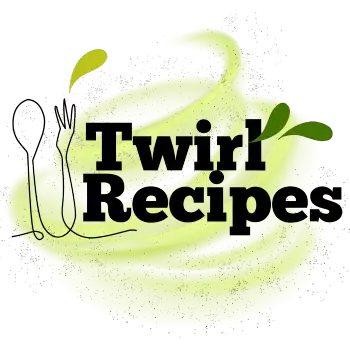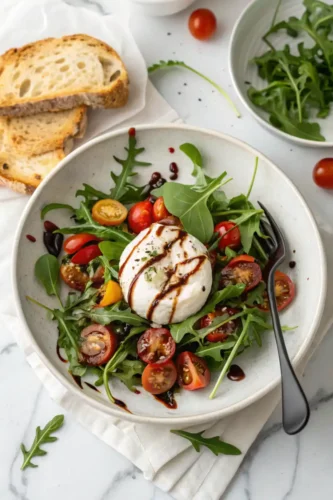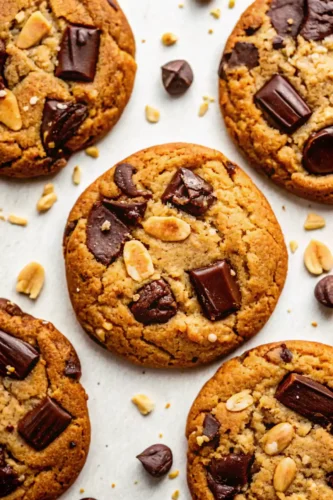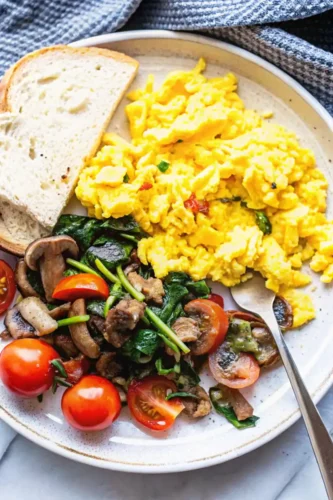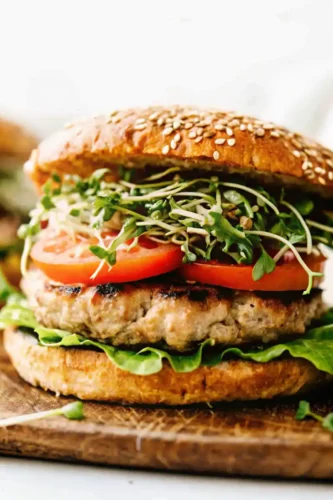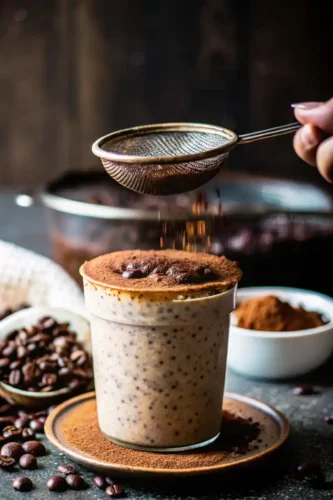When it comes to baking banana bread, have you ever found yourself staring at an empty box of baking soda and wondering, “Can I still make this work?” Well, good news—you’re not alone! This question pops up often for home bakers, and the answer might surprise you. Whether you’re caught in a pinch or just want to skip it, let’s dive into the role of baking soda and explore your options for making delicious, fluffy banana bread without it.

Table of Contents
Table of Contents
Why Is Baking Soda Used in Banana Bread?
Baking soda is a powerful ingredient, and it plays a starring role in many baking recipes, especially quick breads like banana bread. Its job? To act as a leavening agent, helping the batter rise and creating that soft, fluffy texture we all crave. But how does it work? Baking soda reacts with acidic ingredients—like yogurt or buttermilk—creating carbon dioxide bubbles that give your bread its airy lift. Without it, your bread might turn out a bit dense.
Using baking soda also affects the flavor. It balances the sweetness of the bananas and any added sugars, giving your bread a slightly tangy undertone. But don’t worry, skipping it doesn’t mean you’re doomed to flat, flavorless bread!
What Happens If You Leave Out Baking Soda?
If you decide to make banana bread without baking soda, your banana bread might still turn out tasty, but with a few key differences. First, the texture will likely be denser since there’s no leavening agent to help it rise. Second, the flavor might shift a bit because there’s no baking soda to counterbalance the sweetness. However, this doesn’t mean your bread is ruined—it’s just different!
The great thing about banana bread is its forgiving nature. Thanks to the natural moisture and sweetness of ripe bananas, your bread will still be delightful, even without baking soda. You can even tweak the recipe to compensate for its absence.
Substitutes for Baking Soda
Don’t panic if you’re out of baking soda—you’ve got options! Banana bread is versatile, and there are plenty of substitutes to keep your bread soft and flavorful. Whether you’re looking for a simple swap or want to experiment with unique ingredients, there’s a solution for every baker.
Best Alternatives to Baking Soda
When replacing baking soda, the key is to find something that can also act as a leavening agent. Here are some tried-and-true alternatives:
- Baking Powder
Baking powder is the most straightforward replacement. Unlike baking soda, it contains both an acid and a base, so it doesn’t need acidic ingredients to activate. To replace baking soda, use about three times the amount of baking powder. For instance, if your recipe calls for 1 teaspoon of baking soda, use 3 teaspoons of baking powder. - Self-Rising Flour
Self-rising flour already includes leavening agents. If you have it on hand, simply swap it for your regular flour, but skip the baking soda altogether. - Acidic Ingredients (Paired with Baking Powder)
Ingredients like yogurt, vinegar, or lemon juice can mimic the acidic reaction of baking soda. Combine them with baking powder to achieve a similar lift. For example, add 1 teaspoon of lemon juice along with 2 teaspoons of baking powder for a perfectly fluffy loaf.
Adjusting the Recipe for Substitutes
When you substitute baking soda, it’s essential to tweak other parts of the recipe to maintain the balance of flavors and textures:
- Adjust Liquid Ratios
If you’re using vinegar, lemon juice, or yogurt, reduce other liquids slightly to avoid an overly wet batter. - Enhance Sweetness
Since baking soda reduces acidity and balances sweetness, you might notice a sweeter loaf without it. Feel free to cut back slightly on added sugars or balance it with an extra pinch of salt.
Pro Tip: Test Your Batter
Trying a substitute for the first time? Bake a small batch to test the results before committing to the full recipe. This way, you’ll have a better idea of how your chosen alternative performs.
Crafting the Perfect Banana Bread Without Baking Soda
Baking banana bread without baking soda doesn’t mean you have to compromise on flavor or texture. With a few thoughtful adjustments, you can still enjoy a tender, moist loaf that’s every bit as delicious as the original. Let’s break it down into manageable steps, starting with your ingredients.
Ingredient Adjustments
Swapping out baking soda requires careful tweaking of your ingredients to maintain the bread’s structure and flavor. Here’s how to do it:
- Ripe Bananas Are Key
The riper the bananas, the more natural sweetness and moisture they bring to your bread. Look for bananas with plenty of brown spots—they’re perfect for adding softness and depth of flavor. - Incorporate a Leavening Substitute
Whether you’re using baking powder or another substitute, ensure you measure accurately. Too much can result in an odd flavor, while too little might leave your bread dense. - Use Room-Temperature Ingredients
Room-temperature butter, eggs, and yogurt blend more smoothly, helping to create a cohesive batter. This is especially important when working without the powerful leavening effects of baking soda.
Step-by-Step Guide
Here’s a simple and reliable recipe for banana bread without baking soda. Follow these steps for perfect results:

Ingredients:
- 3 medium overripe bananas, mashed
- 1/2 cup unsalted butter, melted
- 3/4 cup granulated sugar (adjust to taste)
- 2 large eggs, at room temperature
- 1 teaspoon vanilla extract
- 1 1/2 cups all-purpose flour (or self-rising flour if skipping substitutes)
- 3 teaspoon baking powder
- 1/4 teaspoon salt
- 1/2 cup plain yogurt or milk (optional for added moisture)
Instructions:
- Preheat Your Oven: Preheat to 350°F (175°C) and grease a 9×5-inch loaf pan.
- Mash the Bananas: Use a fork to mash the bananas until smooth. Set aside.
- Mix Wet Ingredients: In a large bowl, whisk the melted butter, sugar, eggs, and vanilla extract until combined. Stir in the mashed bananas.
- Combine Dry Ingredients: In a separate bowl, sift together the flour, baking powder, and salt. Gradually fold the dry ingredients into the wet mixture.
- Add Yogurt (Optional): If using yogurt or milk, stir it in to create a silky batter.
- Pour and Bake: Pour the batter into the prepared loaf pan. Bake for 50–60 minutes or until a toothpick inserted into the center comes out clean.
- Cool Completely: Let the bread cool in the pan for 10 minutes before transferring it to a wire rack.

Tips for Extra Fluffiness
- Don’t overmix the batter; gently folding helps keep the bread tender.
- Check your oven temperature with a thermometer for consistent results.
With these adjustments and steps, your banana bread will be a crowd-pleaser—even without baking soda!
Common Mistakes and Troubleshooting
Even the most experienced bakers encounter hiccups when trying new variations of banana bread, especially when skipping baking soda. But don’t worry! If something doesn’t go quite as planned, these troubleshooting tips will help you fix or avoid common mistakes.
Mistakes to Avoid
- Overmixing the Batter
Overmixing can make your banana bread dense and tough. Why? Too much mixing activates the gluten in the flour, which is great for bread dough but not for soft quick breads. Instead, gently fold the ingredients together until just combined—lumps are perfectly fine! - Using Bananas That Aren’t Ripe Enough
If your bananas are too firm, the bread will lack the rich sweetness and moisture that ripe bananas provide. If your bananas aren’t ripe, try microwaving them for 30 seconds to soften and sweeten them. - Skipping the Leavening Substitute
Omitting baking soda without replacing it can result in a heavy, dense loaf. Always add an alternative like baking powder or self-rising flour to help your bread achieve that desirable lift. - Baking at the Wrong Temperature
An oven that’s too hot can cause the outside to cook too quickly while leaving the inside underdone. Use an oven thermometer to ensure accurate temperatures, and always preheat before baking.
Troubleshooting Tips

- The Bread Didn’t Rise Properly
If your bread turns out flat, double-check your substitute quantities. For instance, if you used baking powder, ensure it was measured accurately (3 teaspoons of baking powder for every 1 teaspoon of baking soda). - It’s Too Dense
A dense loaf could mean overmixing, not enough leavening, or using old bananas. Next time, try gently folding the batter, using fresher bananas, and ensuring your substitute is still effective. (Pro tip: Baking powder loses potency over time, so always check the expiration date!) - The Center is Undercooked
If the middle is gooey while the edges are done, it could be due to uneven heat distribution or pulling the bread out of the oven too soon. Try tenting the top with foil during the last 15 minutes of baking to prevent the edges from overbrowning while the center finishes baking. - The Bread is Too Sweet or Bland
Remember, baking soda balances the sweetness in banana bread. If it tastes overly sweet without it, reduce the sugar slightly next time, or add an extra pinch of salt to even out the flavor.
Pro Tips for Salvaging a Mishap
- If the bread is too dense, slice it thinly and toast it for a crunchy banana bread snack.
- Undercooked bread? Slice it and bake the slices at 300°F (150°C) for 10–15 minutes to finish cooking.
Baking banana bread without baking soda might take a bit of trial and error, but these tips will help you navigate any bumps along the way.
Tips and Tricks for Perfect Banana Bread Every Time
Baking banana bread is a comforting, creative process, and even without baking soda, you can still achieve a loaf that’s moist, flavorful, and irresistible. Here are some handy tips and tricks to ensure your banana bread turns out perfect every time.
Pro Tips for Success
- Use Overripe Bananas
The best bananas for baking are those that look a little past their prime—soft with brown spots. They’re packed with natural sweetness and moisture, which enhances the flavor and texture of your bread. If your bananas aren’t ripe yet, try placing them in a brown paper bag overnight or baking them in the oven at 300°F (150°C) for about 15 minutes. - Incorporate a Substitute Thoughtfully
If you’re using baking powder or another leavening substitute, make sure it’s evenly mixed into the dry ingredients. This prevents uneven rising and ensures the bread bakes evenly. - Don’t Overmix the Batter
Overmixing can be a quick bread’s worst enemy. Stir just until the dry ingredients are incorporated into the wet ones. A few lumps are fine—they’ll smooth out during baking. - Let the Batter Rest
After mixing, let the batter sit for 10 minutes before pouring it into the pan. This allows the substitute leavening agent to activate, giving the bread a better rise.
Baking Hacks
- Use the Right Pan
A 9×5-inch loaf pan is the standard for banana bread, but smaller pans can also work for mini loaves. Adjust the baking time accordingly. - Preheat Your Oven
Always preheat your oven to 350°F (175°C). A consistent oven temperature ensures even cooking and prevents soggy centers. - Check for Doneness
Insert a toothpick into the center of the bread. If it comes out clean or with a few moist crumbs, it’s ready! If batter sticks, bake for another 5–10 minutes and check again.
Storing and Freezing Banana Bread
Banana bread stays moist for several days if stored properly:

- At Room Temperature: Wrap the loaf tightly in plastic wrap or aluminum foil, and keep it on the counter for up to 4 days.
- In the Freezer: Slice the bread and store the slices in an airtight container or freezer bag. They’ll stay fresh for up to 3 months. When you’re ready to eat, thaw at room temperature or pop a slice into the toaster for a quick snack.
Experiment and Have Fun!
Banana bread is one of the most adaptable baked goods out there. Add chocolate chips, nuts, or spices like cinnamon to make the recipe your own. Once you’ve mastered the basics, you can get creative with flavors and ingredients.

Banana Bread Without Baking Soda
Ingredients
- 3 medium overripe bananas mashed
- 1/2 cup unsalted butter melted
- 3/4 cup granulated sugar adjust to taste
- 2 large eggs at room temperature
- 1 teaspoon vanilla extract
- 1 1/2 cups all-purpose flour or self-rising flour if skipping substitutes
- 3 teaspoon baking powder
- 1/4 teaspoon salt
- 1/2 cup plain yogurt or milk optional for added moisture
Instructions
- Preheat your oven to 350°F (175°C) and grease a 9×5-inch loaf pan.
- Mash the bananas using a fork until smooth. Set aside.
- In a large bowl, whisk together the melted butter, sugar, eggs, and vanilla extract until well combined. Stir in the mashed bananas.
- In a separate bowl, sift together the flour, baking powder, and salt. Gradually fold the dry ingredients into the wet mixture.
- If using yogurt or milk, stir it in to create a silky batter.
- Pour the batter into the prepared loaf pan. Bake for 50–60 minutes or until a toothpick inserted into the center comes out clean.
- Let the bread cool in the pan for 10 minutes before transferring it to a wire rack to cool completely.
Notes
Frequently Asked Questions
Can you leave out baking soda in banana bread?
Yes, you can! While the bread might turn out denser and slightly sweeter without baking soda, it’s still absolutely delicious. By using a substitute like baking powder or self-rising flour, you can maintain the texture and lift of the bread. The natural moisture and flavor from bananas make it forgiving even without a leavening agent.
What happens if you don’t add baking soda?
Without baking soda, the bread may not rise as much, leading to a denser texture. You might also notice a shift in flavor because baking soda balances the sweetness of the bananas and sugar. However, the taste is still delightful, and adjustments like adding baking powder can help.
Can I use baking powder instead of baking soda in banana bread?
Absolutely! Baking powder is a great substitute. Use about three times the amount of baking powder compared to baking soda. For example, if your recipe calls for 1 teaspoon of baking soda, use 3 teaspoons of baking powder. Be sure to adjust other ingredients, like reducing acidic components, since baking powder already contains an acid.
What if my banana bread turns out flat?
A flat banana bread might mean you didn’t use enough leavening substitute, or the oven temperature was off. Check your measurements (3 teaspoons of baking powder for every 1 teaspoon of baking soda) and ensure your oven is preheated to 350°F (175°C).
